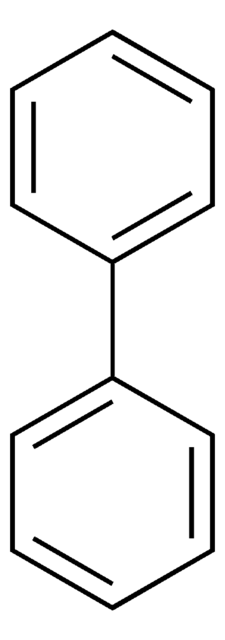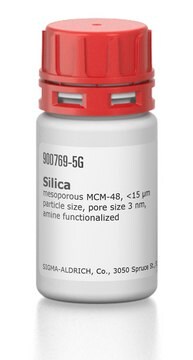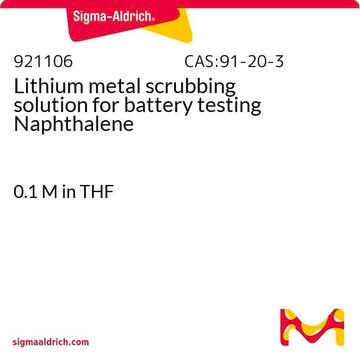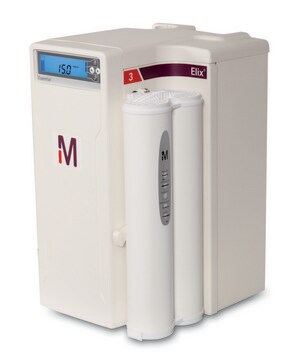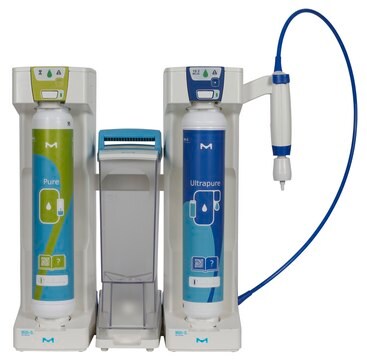Wszystkie zdjęcia(1)
Kluczowe dokumenty
916803
1 M Biphenyl in THF
a precursor solution to prepare the prelithiation/presodiation reagent for disordered carbon, SiO, Sn, Sb, P, and S electrodes
Zaloguj sięWyświetlanie cen organizacyjnych i kontraktowych
About This Item
Wzór empiryczny (zapis Hilla):
C12H10
Masa cząsteczkowa:
154.21
Numer MDL:
Kod UNSPSC:
12352401
NACRES:
NA.23
Polecane produkty
Poziom jakości
Postać
liquid
stężenie
1 M
zanieczyszczenia
≤1000 ppm H2O
Zastosowanie
battery manufacturing
temp. przechowywania
2-8°C
Zastosowanie
This product is biphenyl (Bp) solution in anhydrous THF (1 mol/L) is a precursor reagent that could be easily handled to prepare prelithiation or presodiation reagent. By direct reaction of Li metal, it forms a strong reducing reagent of Li-Bp. The resulting Li-Bp/THF reagent has the redox potential of 0.41 V vs. Li/Li+, which is applicable to prelithiate most of the active materials for Li ion batteries, such as Sn, Sb, P, S, SiO and other metal oxide. On the other hand, a presodiation reagent can be prepared by reacting Bp/THF solution with Na metal. Na-Bp/THF reagent can be used to presodiate hard carbon, a promising anode material in Na ion batteries.
Uwaga dotycząca przygotowania
Suggested Directions for use:
To prepare 1 M Li-Bp/THF reagent, > 0.07 g of Li metal is added into every 10 ml of 1 M BP/THF solution
To prepare 1 M Na-Bp/THF reagent, > 0.23 g of Na metal is added into every 10 ml of 1 M BP/THF solution
- Step 1 Preparation of Prelithiation/presodiation reagent
To prepare 1 M Li-Bp/THF reagent, > 0.07 g of Li metal is added into every 10 ml of 1 M BP/THF solution
To prepare 1 M Na-Bp/THF reagent, > 0.23 g of Na metal is added into every 10 ml of 1 M BP/THF solution
- Step 2 Prelithiation/presodiation of electrodes
Ta strona może zawierać tekst przetłumaczony maszynowo.
Hasło ostrzegawcze
Danger
Zwroty wskazujące rodzaj zagrożenia
Zwroty wskazujące środki ostrożności
Klasyfikacja zagrożeń
Acute Tox. 4 Oral - Aquatic Chronic 2 - Carc. 2 - Eye Irrit. 2 - Flam. Liq. 2 - Skin Irrit. 2 - STOT SE 3
Organy docelowe
Central nervous system, Respiratory system
Zagrożenia dodatkowe
Kod klasy składowania
3 - Flammable liquids
Klasa zagrożenia wodnego (WGK)
WGK 2
Temperatura zapłonu (°F)
1.4 °F
Temperatura zapłonu (°C)
-17 °C
Wybierz jedną z najnowszych wersji:
Certyfikaty analizy (CoA)
Lot/Batch Number
Nie widzisz odpowiedniej wersji?
Jeśli potrzebujesz konkretnej wersji, możesz wyszukać konkretny certyfikat według numeru partii lub serii.
Masz już ten produkt?
Dokumenty związane z niedawno zakupionymi produktami zostały zamieszczone w Bibliotece dokumentów.
High performance lithium-ion and lithium−sulfur batteries using prelithiated phosphorus/carbon composite anode..
Wang F, et al.
Energy Storage Materials, 24, 147-152 (2020)
Nasz zespół naukowców ma doświadczenie we wszystkich obszarach badań, w tym w naukach przyrodniczych, materiałoznawstwie, syntezie chemicznej, chromatografii, analityce i wielu innych dziedzinach.
Skontaktuj się z zespołem ds. pomocy technicznej